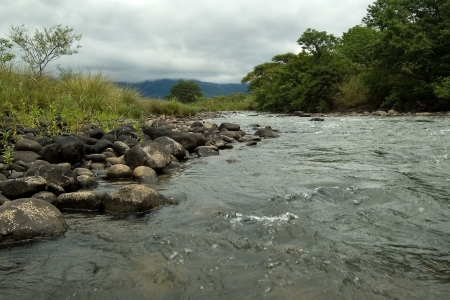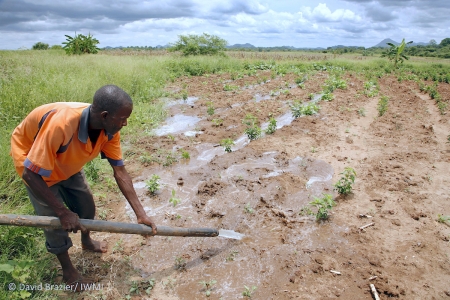Originally published in the Africa Energy Portal.
Solar-powered groundwater irrigation has numerous advantages over diesel in boosting the productivity and sustainability of agriculture, but variations in need, climate and market prices complicate the picture across sub-Saharan Africa.
Even though over half the population of sub-Saharan Africa is employed in agriculture, food security indicators in the region are declining, and the number of stunted children is on the rise. There is also continued absence of significant state effort to reverse decades of under-investment in agricultural research and development. In 2016/17, only a handful of countries in the region invested 1% or more of their agricultural GDP in agricultural research.
There is thus an urgent need for farmer-driven and private-sector solutions to accelerate agricultural development and counter the growing, adverse impacts on productivity of climate change, conflict and the COVID-19 pandemic.
Drawing water up with the sun
One such solution is irrigation, which in sub-Saharan Africa is increasingly characterized by farmers purchasing equipment themselves, slowly extending irrigated harvested areas that nonetheless remain the lowest as a share of total cultivated area in the developing world. While private initiative is essential, a conducive enabling environment with strong support from governments is required to enhance inclusion and environmental sustainability.
In this context, solar-powered groundwater irrigation is a potentially groundbreaking, disruptive technology, particularly for resource-constrained states, because this 'clean' energy source, for which costs have come down dramatically, can 'democratize' energy access. This is particularly relevant for sub-Saharan Africa, where 600 million people do not yet have access to electricity, and where groundwater supplies are in many countries larger and better distributed than surface supplies. Solar-powered groundwater irrigation can increase and stabilize food production during dry seasons and droughts and the solar panels can also supply off-farm benefits such as charging mobile phones or providing lighting. In short, compared to existing diesel-powered pumps with substantial operating costs in the form of fuel, solar power could be a winner.
Clouds on the horizon
The outlook is not always so sunny, however. Solar energy can be a more cost-effective way to extend irrigation, but a new paper comparing the techno-economic potential of solar-powered irrigation with the more common diesel-powered irrigation finds that solar power is more cost-effective on less than two thirds of suitable land in sub-Saharan Africa. While attention is generally on the higher initial capital costs for solar solutions, there are other crucial considerations:
- Having access to lots of sunlight matters! In fact, more than 80% of the area in Southern Africa with irrigation potential could cost-effectively benefit from solar energy. Solar-powered pumps also do well in Central Africa, but other areas of sub-Saharan Africa don't get as much sunlight.
- Low diesel prices are a disincentive to the adoption of solar-powered motor pumps. In Angola, Nigeria and Sudan, highly subsidized diesel prices – reported in 2018/19 at US$0.44/liter, $0.57/liter and $0.09/liter, respectively – would render solar irrigation profitable only if the installed costs of solar power systems come down to US$0.7–1.8 per watt peak.
- Lots of rainfall and high humidity do not favor the installation of solar panels (and also depress demand for diesel-powered pumps). While solar insolation is at a maximum around the Equator, precipitation levels lower the need for irrigation.
- Solar powered pumps are more cost-effective for crops with higher irrigation demands, such as sugarcane. While solar panels are sized to meet irrigation demands in the peak months, diesel pump costs increase linearly with irrigation water needs.
- Connecting the pumps with different water-saving field application technologies, such as drip, does not really affect the effectiveness of either pump type; instead, both technologies would simply be procured at smaller sizes.
Productivity and beyond
As with all technologies, the solar-powered irrigation pump is not a silver bullet that can strike at the heart of agricultural productivity challenges across sub-Saharan Africa on its own. That said, the technology is highly favorable at a cost of US$2.5 per watt peak in central and southern Africa and also for half or more of irrigable crops in West and East Africa if costs come down further, to US$2.0 per watt peak, given 2018/19 diesel prices.
If we move beyond an assessment of pure profitability to deploying solar technology as one of the many weapons in our armory to combat climate change, then its contribution to the sustainability of agriculture increases substantially. However, solar power adoption must be effectively linked with improved community groundwater management, as the incentive provided by fuel costs to extract water judiciously may be reduced. The USAID-supported Innovation Laboratory for Small-Scale Irrigation (ILSSI) is addressing this concern by piloting social learning interventions to improve the sustainability and equity of rapid groundwater expansion working with farmers practicing diesel, solar and manual lifting devices that are put to work to unlock the region's groundwater potential.
---
Thrive blog is a space for independent thought and aims to stimulate discussion among sustainable agriculture researchers and the public. Blogs are facilitated by the CGIAR Research Program on Water, Land and Ecosystems (WLE) but reflect the opinions and information of the authors only and not necessarily those of WLE and its donors or partners.
WLE and partners are supported by CGIAR Trust Fund Contributors, including: ACIAR, DGIS, FCDO, SDC, Sida and others.














